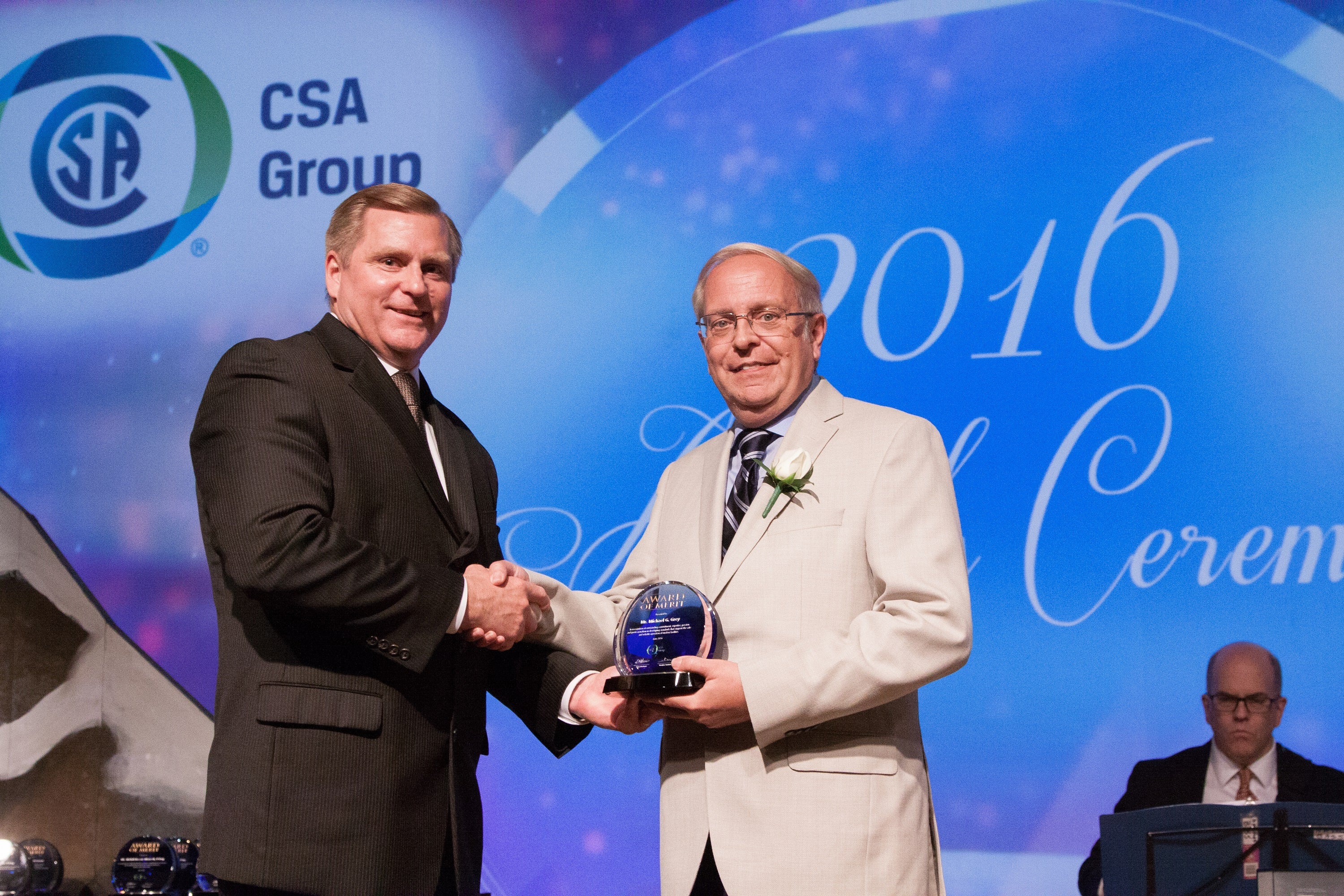
Written by Mike Grey (MSc ’82)
Michael Grey (MSc '82) receiving the Award of Merit in recognition of outstanding commitment, expertise, passion and professionalism in developing standards that support the safe and reliable operation of nuclear facilities.
There’s no narrow path to success. I arrived at Waterloo in the fall of 1974 undecided as to whether I wanted to study Physics or Chemistry. Eventually, I decided to do both. I completed my undergraduate degree in Physics and I stayed at Canada’s most innovative University to do my Masters in Chemistry. After University I took several positions at community colleges, I then accepted a position in the health physics department at a nuclear power plant, but the jobs kept coming. I was employed in a uranium fuel manufacturing plant and a radiopharmaceutical processing facility before I made the jump into consulting.
Many of my consulting projects have involved the remediation of contaminated sites, the management of radioactive and hazardous wastes, and monitoring the impacts of nuclear facilities on the environment. The University of Waterloo provided me with an exceptional background in both Physics and Chemistry, which was essential for my role in dealing with nuclear activities within the Canadian Standards Association (CSA). CSA creates and maintains standards that support the safe operation of nuclear facilities. Over the last eight years, I’ve managed and contributed to the development of seed documents for several new standards on ‘Environmental Management for Nuclear Facilities.’
When I started working in environmental health physics I frequently relied on a CSA standard entitled “Guidelines for Radiological Monitoring of the Environment” (N288.4) that was published in 1990 but by 2000, it was recognized that this standard was no longer sufficient, and in desperate need of revision. Participants at a stakeholder workshop decided to expand the scope of the standard to include monitoring of chemical contaminants and physical stressors such as heat and noise from all nuclear facilities, including uranium mines and waste management facilities and their impacts on both humans and non-human biota.
The expanded scope of the standard required a new approach to its development. Historically, CSA standards have been developed by volunteer committees drawn from industry and interest groups but the expanded scope of the new N288.4 standard lead the CSA to try a new approach. The new standard was developed by a team of technical consultants working under the guidance of a CSA committee composed of representatives of federal and provincial agencies, universities, industry, consultants and retired professionals, but the majority of the work was done by a team of consultants from three consulting companies hired by the CSA. I served on the consultant team as both Project Manager and one of the three Lead Authors for the revision of N288.4. The new N288.4 standard is much larger and more detailed than its predecessor but it was completed in less time, and was so successful that it was used to create a series of related standards. This success propelled me further ahead in my career and allowed me to take over as Chair of the CSA N294 Technical Committee.
My career has taken me from community colleges to nuclear power plants and uranium mines. It hasn't been the career I expected when I started at Waterloo 42 years ago but it certainly has been interesting.